

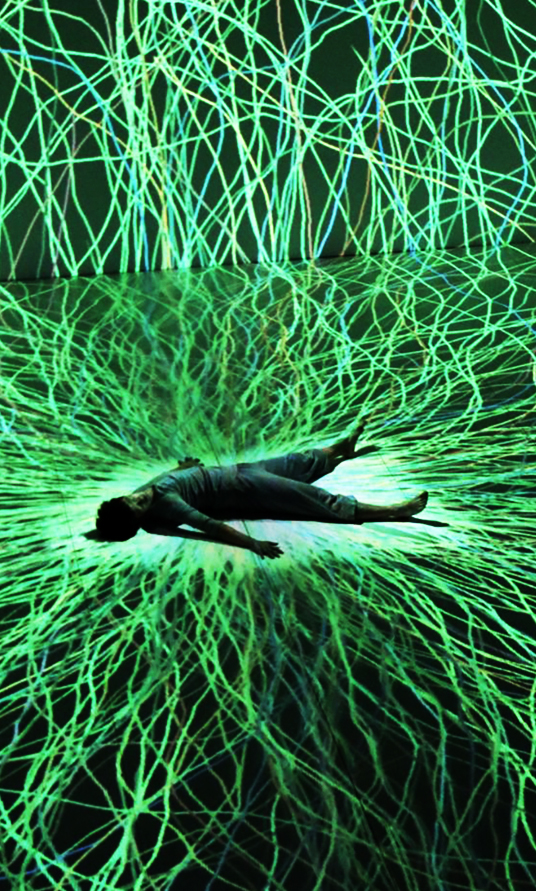
Anarchy Dance Theatre
الفوضى الرقص المسرح
תיאטרון מחול אנרכיה
アナーキーダンスシアター
무정부 댄스 극장
Seventh Sense
Seventh Sense is the collaborative project between Anarchy Dance Theatre and Ultra Combos focusing on building up a new viewer centered performance venue. In this space all movements including the dancers’ and audience’s can be detected and interact with each other through visual effect. The audience is not merely watching the show but actively participating in it. Seventh Sense combines new media and dance to present a wonderful space atmosphere. The elements of interaction, theater and dance are rubbed in to a successful balance. by Sakai Naoki.
Photographer: Shou-cheng LIN

TAO DANCE THEATER
6&7
Tao Ye rejects any attempts to harness his work to narrative, which is why he numbers his choreographies rather than naming them. Numbers 6 and 7 were choreographed one after the other, but are presented here as a single work. 6 takes us into a dark world: six black-clad dancers emerge out of a foggy landscape resembling smog-choked Beijing. They start moving with one ‘voice’, treading the ground firmly and dancing—chiefly with the upper part of their bodies—a ritualistic dance which stretches the human body to the very limits of its flexibility. An equally minimalist soundtrack and the exceptional lighting design of Sweden’s Ellen Ruge, a close collaborator of Mats Ek, who has done a lot of high-profile work here in Greece, complete the raw materials of this performance-experience.
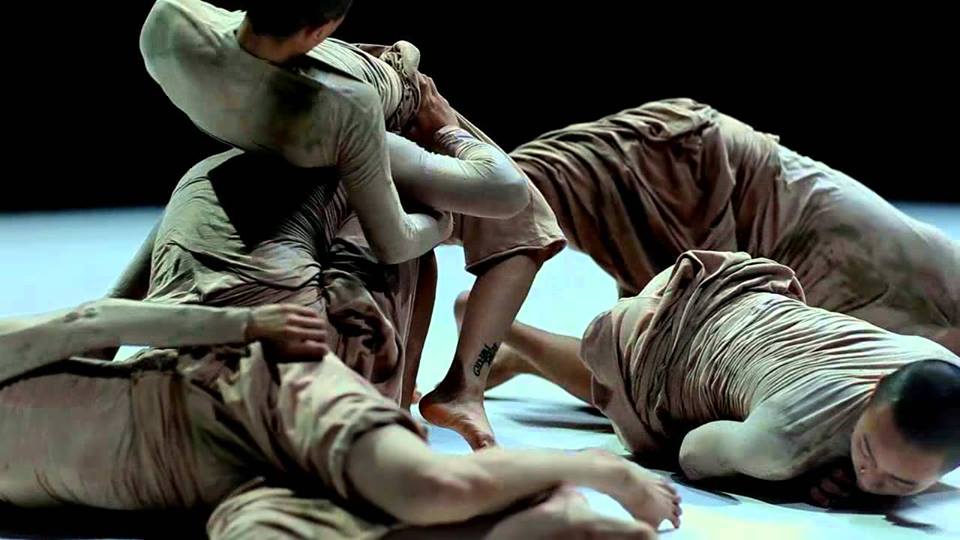
TAO Dance Theater
Since its founding in 2008, TAO Dance Theater has taken China‟s dance world by storm. The company has performed in every modern dance festival throughout the country and has collaborated with leading Chinese artists across genres including theatre, experimental music, film, visual arts and installation. TAO has been featured in performances as well as choreography and teaching residencies in festivals worldwide, including Europalia (BE), Culturescapes (CH), M.A.D.E. Festival (SE), Singapore Arts Festival, and the American Dance Festival (US).
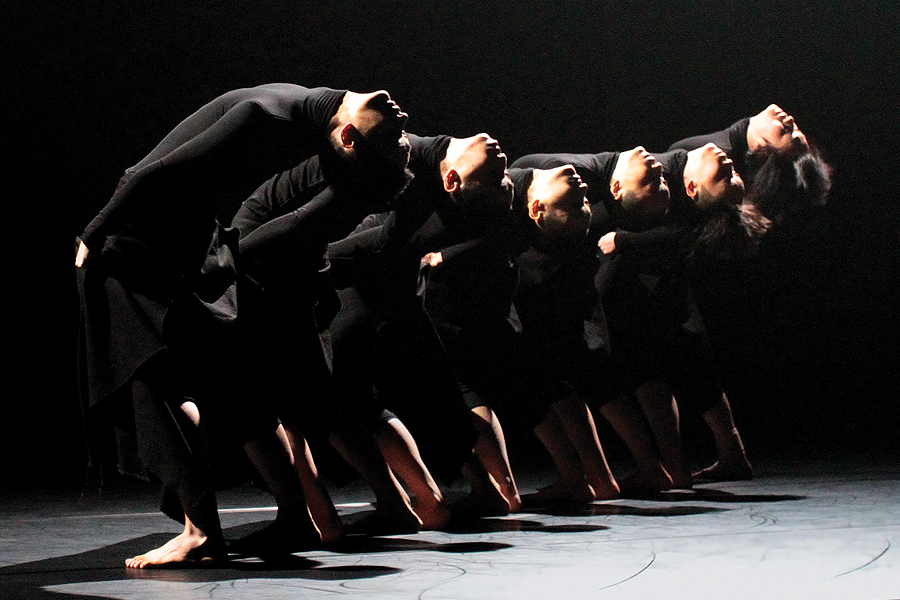
TAO Dance Theater
6&8
In 6, his six dancers move in dynamic and hypnotising unison, in a shifting landscape of light created by Swedish lighting designer Ellen Ruge. His latest work 7 continues Tao Ye’s fascination with pattern, precision and ritual, and is distinguished by a sound track of acoustic effects generated by the seven dancers’ own bodies. Both 6 & 7 will be accompanied by specially commissioned music from Chinese indie folk composer Xiao He.

TAO dance theater
4&5
Tao Ye likes to designate his dances by number rather than name. After 4 comes 5, his latest to appear in the US: the 27-year-old choreographer behind Beijing’s six-member Tao Dance Theater is just getting started. And yet he is already a worldwide festival favourite and distinctive to boot, in spite of – or perhaps because of – his deliberately limited means. From 2012, 4 restricted itself to four dancers moving in unison and in a tight cohort within the square of the stage. The dancers’ faces were blacked out, their gaze down, their spines never succumbing to the easy beauty of uprightness, and their voluminous costumes, full of folds and creases, were identical.
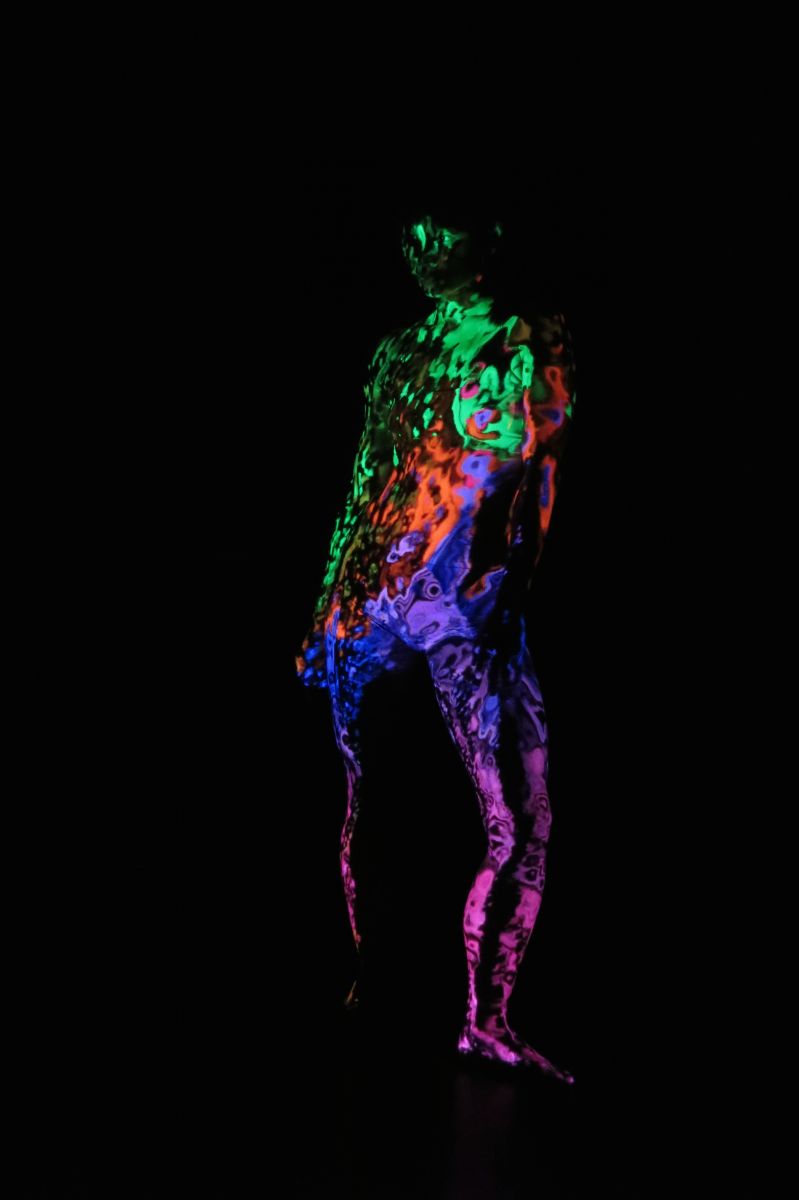
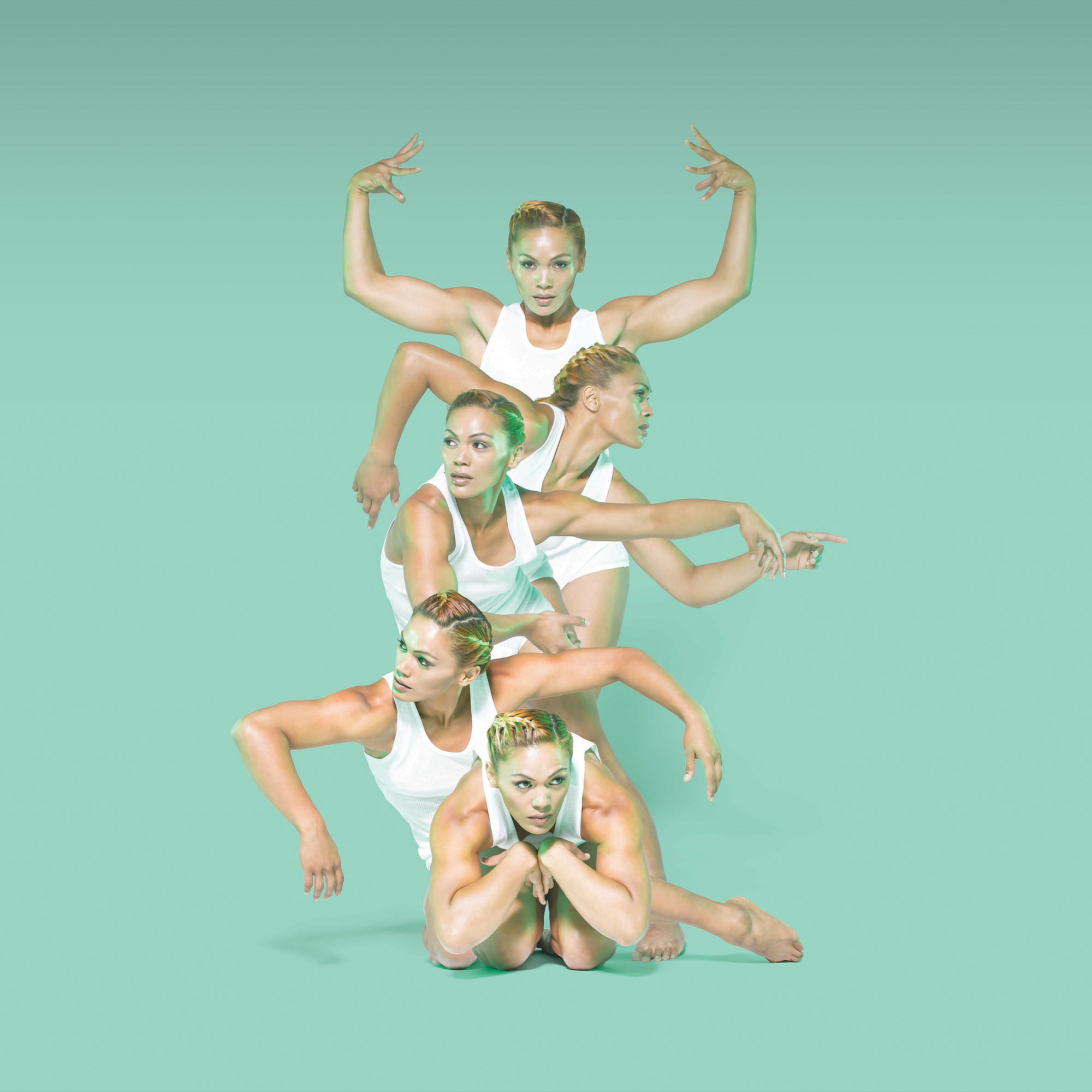
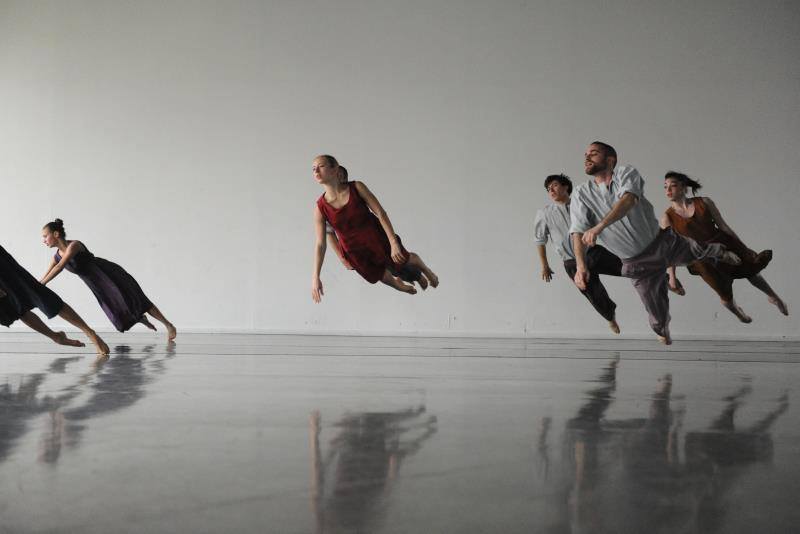
Batsheva Dance Company
Tabula Rasa
Ohad Naharin
Arvo Pärt: Tabula Rasa
photo Gadi Dagon
Hailed as one of the world’s preeminent contemporary choreographers, Ohad Naharin assumed the role of Artistic Director in 1990, and propelled the company into a new era with his adventurous curatorial vision and distinctive choreographic voice. Naharin is also the originator of the innovative movement language, Gaga, which has enriched his extraordinary movement invention, revolutionized the company’s training, and emerged as a growing international force in the larger field of movement practices for both dancers and non-dancers.

Ernesto Neto and SHEN WEI DANCE ARTS
Anthropodino
Ernesto Neto’s interactive installation anthropodino, currently on display at the Park Avenue Armory, is a massive sensual playground that invites viewers to touch the various fabrics, lie down on a large purple beanbag, walk through the womb-like structure, and smell the aromatic fabric tubes dangling from above.
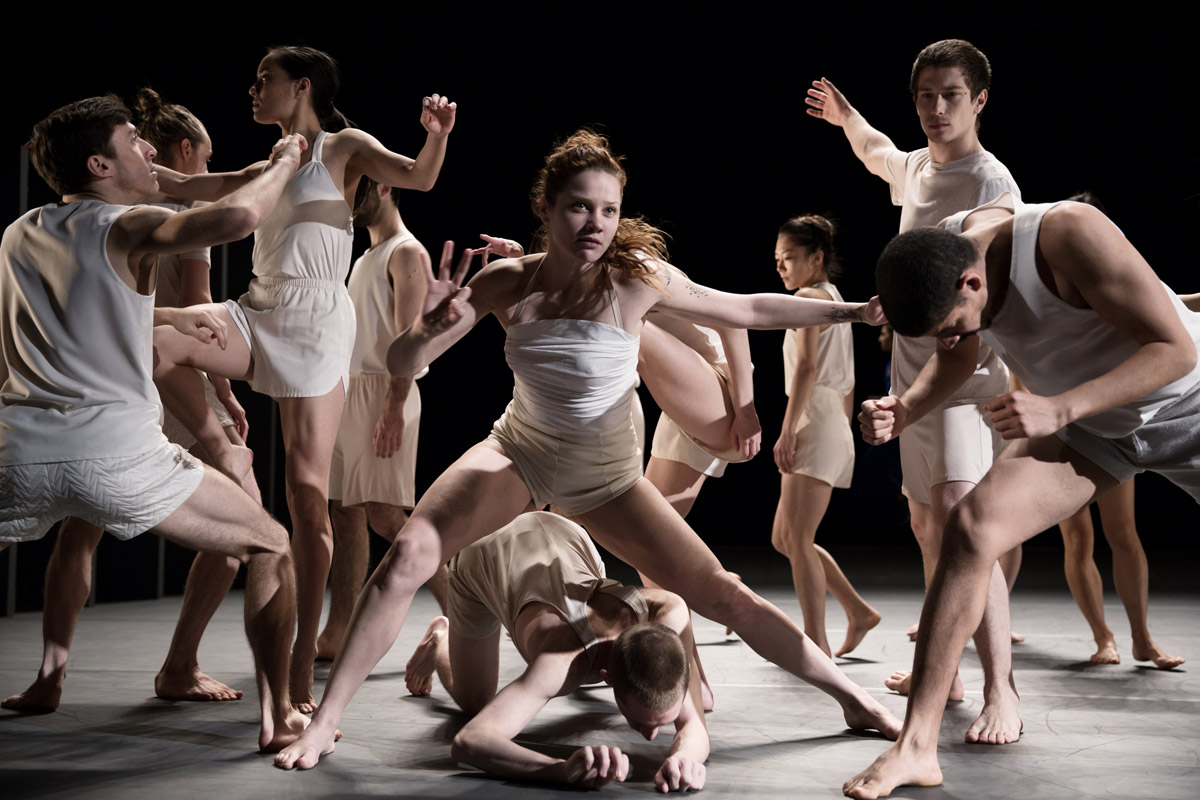

BOUNCE STREETDANCE COMPANY
Insane in the brain
‘Insane in the Brain’ is a reworked producion of One Flew Over the Cuckoo’s Nest as a feast of stunning street dance. Injecting a healthy dose of contemporary styles fused with breathtaking hip hop moves. ‘Insane in the Brain’ features a pulsating soundtrack with cuts from Missy Elliot, Dizzee Rascal, Gotan Project, David Holmes and Cypress Hill. Inventive set design and choreography are mixed with film and multimedia sequences to produce a fast-paced show that is funny, moving and packed with high-octane dance.



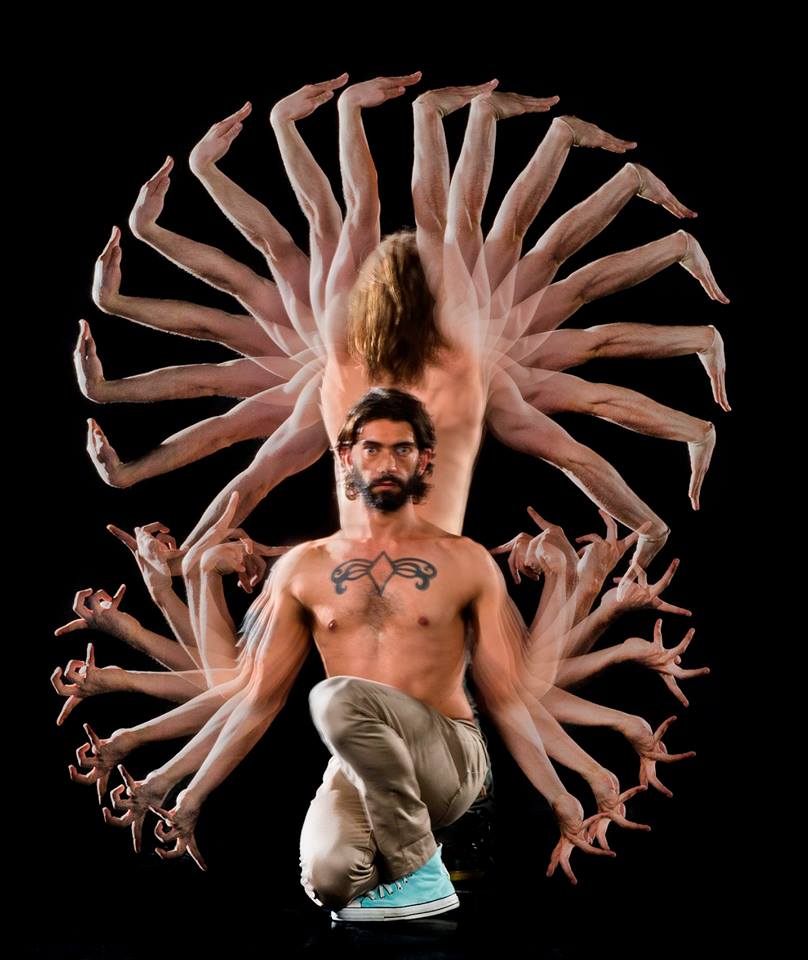

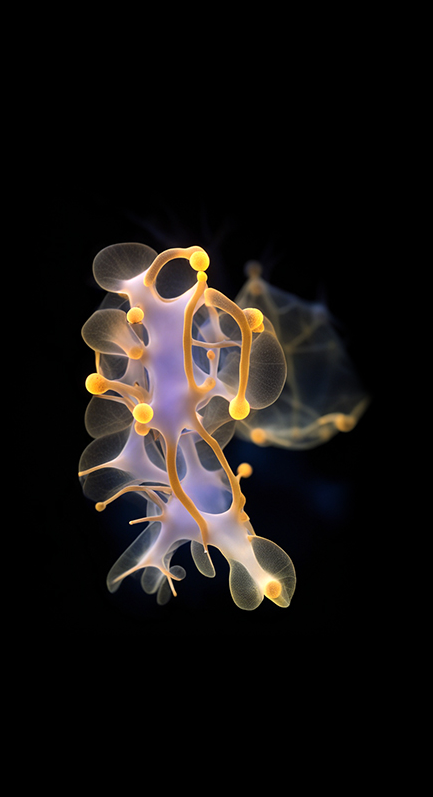
Memo Akten and Katie Peyton Hofstadter
Embodied Simulation
‘Embodied Simulation’ is a multiscreen video and sound installation that aims to provoke and nurture strong connections to the global ecosystems of which we are a part. The work combines artificial intelligence with dance and research from neuroscience to create an immersive, embodied experience, extending the viewer’s bodily perception beyond the skin, and into the environment.
The cognitive phenomenon of embodied simulation (an evolved and refined version of ‘mirror neurons’ theory) refers to the way we feel and embody the movement of others, as if they are happening in our own bodies. The brain of an observer unconsciously mirrors the movements of others, all the way through to the planning and simulating execution of the movements in their own body. This can even be seen in situations such as embodying and ‘feeling’ the movement of fabric blowing in the wind. As Vittorio Gallese writes, “By means of a shared neural state realized in two different bodies that nevertheless obey to the same functional rules, the ‘objectual other’ becomes ‘another self’.”

QUBIT AI: SurrealismToday.com
The Legend of Ogie
FILE 2024 | Aesthetic Synthetics
International Electronic Language Festival
SurrealismToday.com – The Legend of Ogie – United States
What worlds exist beyond Einstein’s speed limit? Inspired by Eric Weinstein’s theory of Geometric Unity, the work explores the idea that space-time is like a melody playing over an eight-dimensional universe. Abstract and metamorphic forms transition from organic forms to parastatic patterns, creating a dance of visuals and sounds that merge into an immersive experience of fractal unfolding.
Bio
SurrealismToday.com is an artist collective and educational platform dedicated to the proliferation of surreal and visionary ontologies in contemporary art. The group began as an esoteric cargo cult dedicated to discovering the beautiful, the fantastic, and the transcendent in the pseudo-philosophical landscape of the art world. His methods include searching for gems in the digital world and infusing mystical enchantments into generative diffusion models.

MERCE CUNNINGHAM
简宁汉
מרס קנינגהם
マース·カニングハム
머시 디스 커닝햄
dance
Мерс Каннингем
Paul Kaiser
Shelley Eshkar
Dancer Matthieu Chayrigues
Compagnie Centre National de Danse Contemporaine-Angers.
Photo: Charlotte Audureau.
BIPED
“Ever the experimentalist, Cunningham collaborated with digital artists Paul Kaiser and Shelley Eshkar using motion capture technology to create BIPED. As the name suggests it’s in its most basic sense an exploration of the biped, the ambulatory two-legged body.
Eshkar and Kaiser place a scrim in front of the dancers on which they project a moving décor of lines and patterns.” Lisa Traiger

SASHA FROLOVA
САША ФРОЛОВА
AQUAAEROBIKA
Aquaaerobika is a project synthesizing art-performance and electronic music. Electro-pop, 8bit, disco-house music and futuristic inflatable costumes from latex are mixed in a vivid spectacular pop-art show. Dancers in avant-garde Bauhaus-style costumes with huge inflatable decorations and objects look rather like a live sculptures and turn the whole show in one moving sculpture. Aquaaerobika’s author is Moscow based artist – Sasha Frolova.

Elisabeth Chojnacka
Henryk Górecki
Concerto for Harpsichord and String Orchestra Op. 40
Harpsichord: elisabeth chojnacka
Less than nine minutes long, the bipartite Concerto for Harpsichord (or Piano) and String Orchestra, which the composer sometimes called a “prank”, is a veritable volcano that carries the listener away from the very first bars with its immense energy. Its repetitive, motoric nature and rhythmic vigour suit the specific, slightly clattery sound of the harpsichord which is usually somewhat amplified, complemented by the chordal texture of the strings. In both parts, the mood of the piece clearly draws on the highlander music of the southern Podhale region, of which Górecki was a great admirer. In the context of his monumental sacred music from the same period, this Concerto is like the artist’s brief “respite”. It reflects the whirl and “profane” energy of a folk dance.
Elżbieta Chojnacka, to whom the piece was dedicated, has always stressed that every performance of the Concerto, which she has played throughout the world, ends with an encore. The piece meets with such acclaim from the audience, and is one of the most striking – and most joyful – compositions in the composer’s output. “A spectacular plaything”, as Teresa Malecka has described the piece.

PETER WILLIAM HOLDEN
Vicious Circle
Come molti della mia generazione, sono cresciuto succhiando un tubo a raggi catodici e facendo il bagno nelle onde radio. Tutto questo è rappresentato all’interno del mio lavoro, in un collage di movimento, luce e suono. Attualmente con il mio lavoro sto esplorando modi per dissolvere i confini tra cinematografia e scultura. Le mie recenti ricerche su questo tema hanno coinvolto l’uso di computer combinato con elementi meccanici per creare installazioni simili a mandala. Queste installazioni sono il mio mezzo e le uso per creare animazioni effimere. Questa effimera coreografia di movimento è il punto focale del mio lavoro. Credo che questo fascino per le immagini in movimento e la trasformazione degli oggetti derivi dalla mia giovinezza, dove i primi computer domestici degli anni ’80 mi hanno dato uno sguardo nel meraviglioso mondo della matematica applicata. Su questi computer è stato possibile con codici semplici generare fantastici schemi e suoni astratti e quell’incontro ha distrutto per sempre il confine nella mia mente tra astratto e reale. Anche la danza gioca un ruolo significativo nel mio lavoro; Sono stato attratto dalla musica elettronica. L’electro con il suo suono sintetizzato mi ha introdotto alla break-dance e la mia anima è stata catturata dalla bellezza del movimento fisico coreografato.
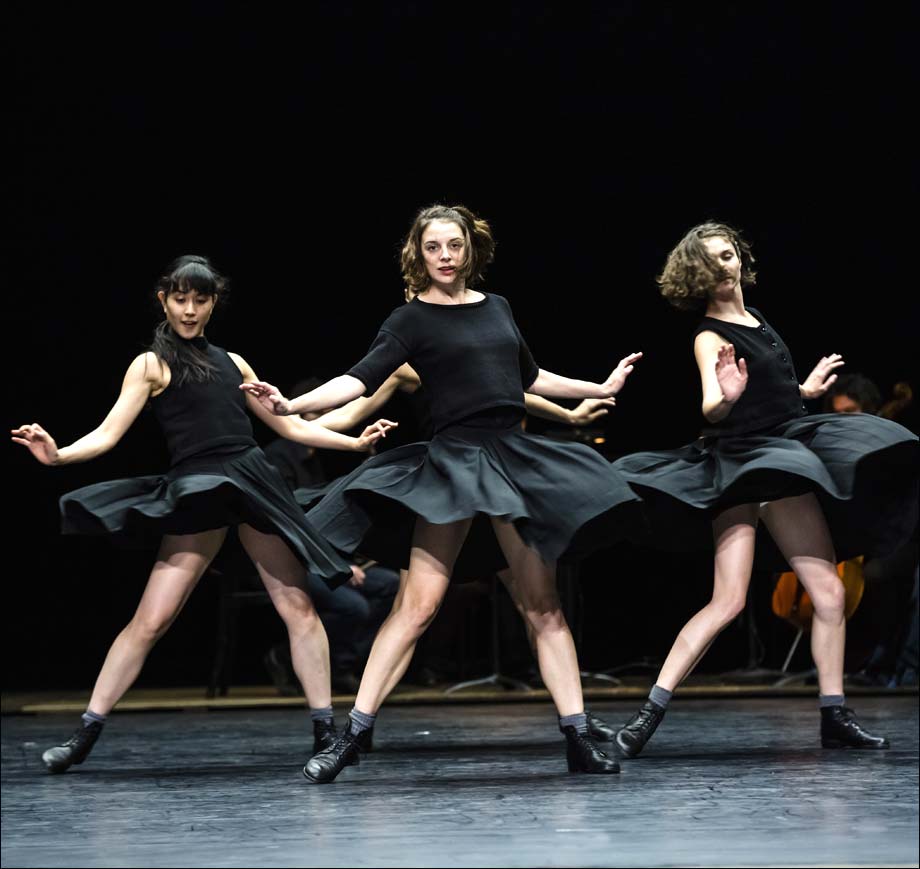
Anne Teresa De Keersmaeker
アンヌ·テレサ·ドゥ·ケースマイケル
АННЫ ТЕРЕЗЫ ДЕ КЕЕРСМАКЕР
Quatuor N°4
The movement vocabulary of “Quartet No. 4” (originally part of a longer evening, “Bartok/Annotations”) is simple, with elaborations on walking and turning movements that incorporate everyday motion (smoothing hair, opening out the hands, a quick unpolished handstand) and folk dance-like skipping, hopping and heel-clicking jumps.

John Butler
Gaitkeeper
“Just be yourself, and nobody else”. Our motions, as distinctive as our faces, will soon be captured and interned. Gaitkeeper is a biometric control suite designed to counter the challenge of ‘Locomotive Camouflage’. LoCam, which combines the physical control of dance with the unpredictability of performance art, is rapidly being adopted by civic insurgents. Gaitkeeper units, based on the off-the-shelf Kiva chassis, are now being deployed as standard counter measures.

Pam Tanowitz
“Gustave Le Gray No. 1”
In 2019, Ballet Across America was put together with the inspiration of women’s leadership in ballet and dance. To mark the celebration, the Center commissioned choreographer Pam Tanowitz to create a world premiere work for the week’s two participating companies, Dance Theatre of Harlem and Miami City Ballet; both are companies led by visionary women – Virginia Johnson at DTH and Lourdes Lopez in Miami.
Tanowitz set the work on two dancers from each company, with a pianist on stage playing a solo work by the composer Caroline Shaw. The piece had its world premiere during Ballet Across America on May 31, 2019. This video captures the premiere performance.
.
Pianist: Sylvia Jung
Dancers: Renan Cerdeiro, Lauren Fadeley, Anthony Santos and Stephanie Rae Williams

HUANG YI & KUKA
The work fulfills Huang’s childhood dream of having a robot dance partner and required development from scratch. After learning the mechanics of the industrial KUKA robot, he conceptualized the movements and programmed the machine to create the partner he wanted. He says of the experience, “Dancing face to face with a robot is like looking at my own face in a mirror… I think I have found the key to spin human emotions into robots.” It was developed into a full-length piece with two additional dancers as part of 3-Legged Dog Art & Technology Center‘s Artist Residency program and their 3LD/3D+ program.

Wayne McGregor
Atomos
Atomos grows out of the smallest unit of matter. Bodies, movement, film, sound and light are atomised into miniature shards of intense sensation.Ten incredible dancers perform the unique style of Wayne McGregor – sculptural, rigorous, jarring and hauntingly beautiful. McGregor is accompanied by a team of sensational artists including longtime collaborators lighting designer Lucy Carter and filmmaker Ravi Deepres, and neo-classical ambient composers A Winged Victory For The Sullen.

Iris van Herpen & Dutch National Ballet
Biomimicry
For the ‘Biomimicry’ film, Iris van Herpen and Dutch National Ballet explore the symbiotic relationship between the metamorphic force in which fashion and dance interlace. The film, directed by Ryan McDaniels, sees the mesmeric dancer JingJing Mao undulating into liquescent shapes and transcending into graceful figures that reflect her myriad of movements. The concept of the creation stems from the notion of biomimicry — the design and production of materials and systems that are modelled on biological processes. In line with Iris van Herpen’s continuous pursuit to materialise the invisible forces that structure the world, the film focusses on the bond between humanity and nature.

Dragan Ilic
Re)Evolution
With the machine programed to draw, the robot becomes a medium for interaction and for “symbiosis” with the artist, creating a kind of “hybrid body” of man and machine, whose nervous system and brain waves administer “software commands” to the robot during the drawing performance. A key actor in the exhibition will be the new model of the KUKA KR 210 robot, that has a multi-functioning performative role: from drawing, experimental dance, music – through the production of industrial sound, and a six channel video projection that documents Ilić’s projects.

Alex Ekman
COW
Ekman talents extend to the lighting and stage design and his eye for structuring an environment is unerring. There is no set as such, excepting the plaster cow which dangles overhead, but the stage surface has its share of movement as little island-blocks rise up and pits sink down. The extreme tilting of the stage at one point causes unfortunate Bauch to roll, cow-like, almost into the pit. COW has its iconic Ekman moment in the scene that opens on a stage full of swirling dancers in white skirts set in a magical silvery mist. Mikael Karlsson, whose music partners the piece provides a subtle and evocative soundscape. He offers a hint of percussive rhythm picked up by the dancers who launch into an ecstatic dance: a stage full of whirling dervishes, until they collapse exhausted.
.
Ekmans Talente erstrecken sich auf die Beleuchtung und das Bühnenbild, und sein Auge für die Strukturierung einer Umgebung ist unfehlbar. Es gibt kein Set als solches, außer der Gipskuh, die über ihnen baumelt, aber die Bühnenoberfläche hat ihren Anteil an Bewegung, wenn kleine Inselblöcke aufsteigen und Gruben sinken. Das extreme Kippen der Bühne an einer Stelle führt dazu, dass der unglückliche Bauch kuhartig fast in die Grube rollt. COW hat seinen legendären Ekman-Moment in der Szene, die auf einer Bühne voller wirbelnder Tänzer in weißen Röcken in einem magischen silbernen Nebel beginnt. Mikael Karlsson, dessen Musikpartner das Stück ist, bietet eine subtile und eindrucksvolle Klanglandschaft. Er bietet einen Hauch von perkussivem Rhythmus, der von den Tänzern aufgenommen wurde, die einen ekstatischen Tanz beginnen: eine Bühne voller wirbelnder Derwische, bis sie erschöpft zusammenbrechen.

Kexin Hao
Future Dance of Nostalgia
Future Dance of Nostalgia is a dancing game which invites audience to perform the choreography that extracts and abstracts the movements found in the pre-industrial, heavy physical labour, and work songs. Motion tracking technology allows the body movements to be quantified, measured, and evaluated. Historical archives of work songs provide the inspiration for the music that renders the old tales and melodies into clubbing beats that lead the dance.
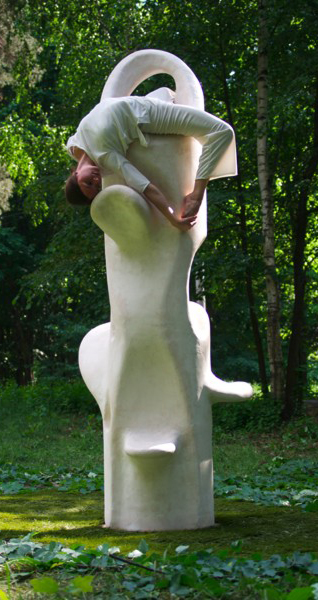
Eve Bailey
ИВ БЭЙЛИ
ENTASIS DANCE IV
My work is based on the concepts of balance and coordination. The body interests me as a perceiving mechanical structure. I use my own body as a primary tool to create pieces that experiment with equilibrium through physical, mechanical, plastic and conceptual means. My studio practice is rooted in the tradition of the artist engineer. I design and build suspended and pendular constructions that can sustain their own weight and mine as I perform with them. By climbing and inverting on the structures, I challenge my own perception and creative process.

OSKAR SCHLEMMER
أوسكار شليمر
奥斯卡·施莱默
אוסקר שלמר
オスカー·シュレンマー
오스카 슐 렘머
Оскар Шлеммер
Triadic Ballet
1-Margarete Hastings, Franz Schömbs, Georg Verden
1970
2-Super 16mm colour film, directed by Helmut Ammann.
Oskar Schlemmer saw the human body as a new artistic medium. He saw ballet and pantomimes as being free from the historical baggage of theater and opera and, therefore, capable of presenting his ideas of choreographed geometry, the man as a dancer, transformed by his costumes, moving in space. He saw the puppet and puppet movement as superior to that of the human, as this emphasized that the average of all art is artificial. This device could be expressed through stylized movements and the abstraction of the human body. Schlemmer saw the modern world being guided by two main currents, the mechanized (man as a machine and body as a mechanism) and the primordial impulse (the depths of creative urgency). He claimed that choreographed geometry offered a synthesis; the Dionysian and emotional origins of dance become rigid and Apollonian in its final form.
3-Bayerisches Junior Ballet München

ALWIN NIKOLAIS
Noumenon
A truly universal artist, the American Alwin Nikolais (1910-1993) devoted his life to a radical form of staged art he called “dance theater.” Inspired (perhaps unconsciously) by the experiments of Bauhaus members such as Oskar Schlemmer and László Moholy-Nagy in the 1920s, Nikolais devised a style of abstract dance that encompassed costumes, stage sets, choreography, lighting, and music, all under his control. Also in 1963, Nikolais met analog synthesizer pioneer Robert Moog, who was at the time just starting his business in New York. He was fascinated by the sounds of Moog’s machines, and with the money provided by a a Guggenheim Fellowship, Nikolais bought the first ever commercially produced Moog synthesizer. It was the primary sound-source for all of Nikolais’ scores from 1963 to 1975. The instrument is now housed at the Stearns Collection of Musical Instruments at the University of Michigan in Ann Arbor.

DI MAINSTONE AND TIM MURRAY-BROWNE
Serendiptichord
The result of a cross-disciplinary investigation spanning fashion, technology, music and dance, the Serendiptichord is a wearable musical instrument that invites the user (or movician) to explore a soundscape through touch and movement. This curious device is housed in a bespoke box and viewed as part of a performance. Unpacked and explored on and around the body, the Serendiptichord only reveals its full potential through the intrepid curiosity of its wearer. Adhering to the body like an extended limb, this instrument is best described as choreophonic prosthetic. Referencing the architectural silhouette of a musical instrument and the soft fabrication of fashion and upholstery, it is designed to entice the movician to explore its surface through touch, physical manipulation and expressive movement. Although this acoustic device can be mastered alone, it also holds subtle openings for group interaction.

Wayne Mcgregor
Torus
Directed by British fashion photographer Nick Knight of SHOWStudio, Torus is a film on human connection and loneliness featuring choreography by Wayne McGregor and styling by Norwegian designer Fredik Tjærandsen. Performed by Company Wayne McGregor, Torus shows dancers wearing inflatable balloons designed by Tjærandsen, orbiting in darkness as isolated entities, occasionally lit as they transition through a temporal universe, a mirror to the life that many are only passing through, barely connecting.

Friendred
Skin-awareness
The immersive space morphs and alters with light and becomes solid, its pressure composing and decomposing the self-awareness of skin. The dancer’s body is extended and manipulated as a conscious entity, exceeding the physiological object. The constant feedback between the body’s trajectory and interaction with the environment changes the nature of the object itself.
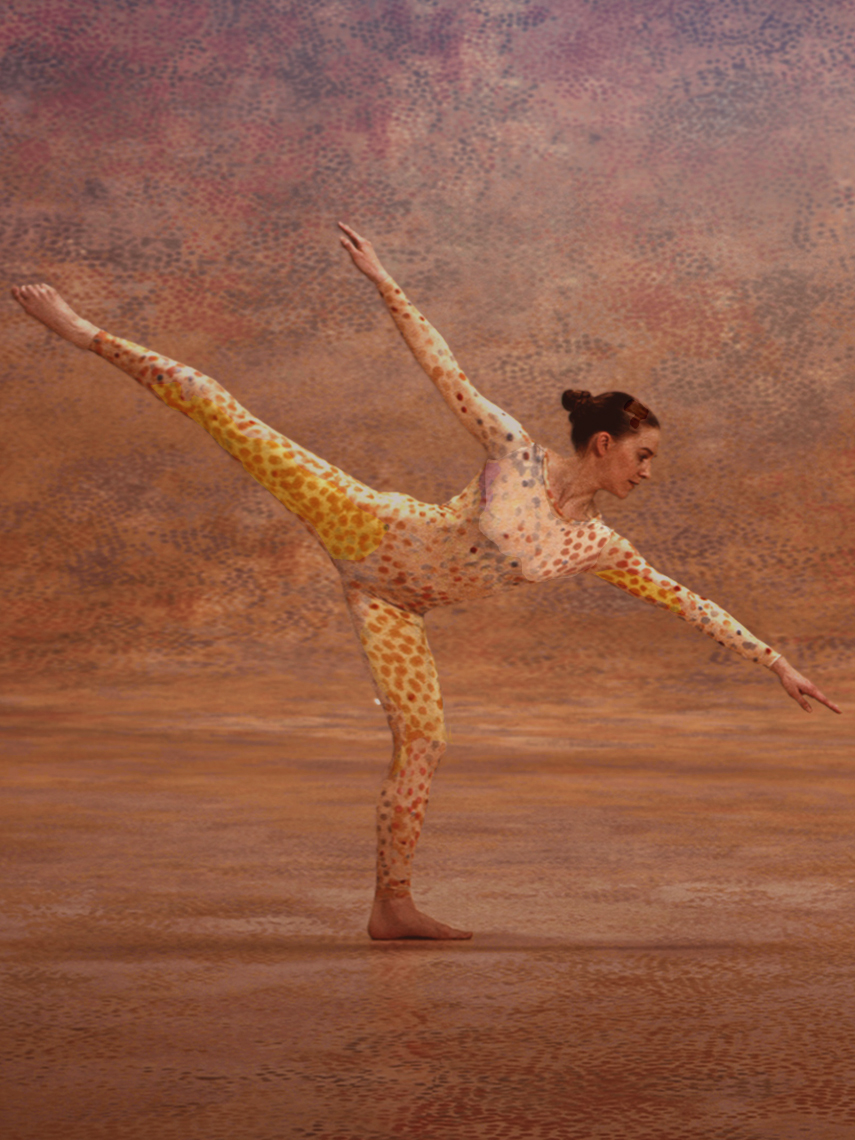
MERCE CUNNINGHAM
Cunningham Clip -Summerspace
CUNNINGHAM is a 3D cinematic experience about the legendary American choreographer, Merce Cunningham, orchestrated through his iconic works and performed by the last generation of his dancers. This poetic film traces Merce’s artistic evolution over three decades of risk and discovery (1944–1972), from his early years as a struggling dancer in postwar New York to his emergence as one of the most visionary and influential choreographers worldwide. 3D technology weaves together Merce’s philosophies and stories, creating a visceral journey through the choreographer’s world.

Zoro Feigl
POPPY
FILE FESTIVAL SÃO PAULO
As a giant poppy flower, this piece of tarpaulin unfolds itself above the viewer to show an elegant dance of waves and curls while within this dance a violent battle emerges between gravity, friction and centrifugal forces.

Hussein Chalayan
フセイン·チャラヤン
ЧАЛАЯН
후세인 샬 라얀
Gravity Fatigue
Fashion designer Hussein Chalayan has created elasticated costumes and sequinned garments for performers in his first self-directed dance production (+ slideshow).The production is split into 18 chapters that each explore themes of identity, displacement and invisibility.

Universal Everything
Hype Cycle
Machine Learning
Set in a spacious, well-worn dance studio, a dancer teaches a series of robots how to move. As the robots’ abilities develop from shaky mimicry to composed mastery, a physical dialogue emerges between man and machine – mimicking, balancing, challenging, competing, outmanoeuvring.

BANDALOOP
100 Northern Ave
You’ve probably never seen anything like this before. Six members of the vertical dance troupe BANDALOOP descended the façade of the new 100 Northern Ave. building commemorating its grand opening at Boston’s Seaport District. The performers are held securely by special rigging allowing them to mesmerize audiences with dynamic physicality and intricate choreography. BANDALOOP honors nature, community, and the human spirit through perspective-bending dance. A pioneer in vertical performance, BANDALOOP seamlessly weaves dynamic physicality, intricate choreography and climbing technology to turn the dance floor on its side. Under the artistic direction of Amelia Rudolph, the work re-imagines dance, activates public spaces, and inspires wonder and imagination in audiences around the world.

kenneth snelson
Needle Tower
“Inspired by architect Buckminster Fuller’s interest in the geometry of structure, Snelson’s experiments led to a prototype for a “floating compression structure.” Fuller subsequently credited Snelson with having invented a new structural principle which the architect named tensegrity, a contraction of the words tension and integrity.
These investigations into the physical properties of structure became more fully realized as an art form beginning in the 1950s. Snelson created sculptures consisting of tubes and cables. Cylinders of steel seemingly dance through space in defiance of gravity, yet it is the structural competition between tension and compression which underlies their construction. Snelson finds beauty in bringing these forces of nature into balance: the rigid compression tubes pushing outward, the flexible tension cables pulling inward. His sculptures would maintain their structural integrity beyond gravity, in the vacuum of outer space.” Joelle Burrows

Hiroaki Umeda
Median
When examining any living substance at a microscopic level, there are almost no perceivable boundaries between human and non-human bodies. In this work, Hiroaki Umeda, a Japanese choreographer, dancer and visual artist, pursues his longstanding belief and fascination that a human body is an intrinsic part of nature, where there is simply no distinction with other living things. For Umeda, choreography is not only limited to human bodies but for anything that is capable of movement. In MEDIAN, he explores the choreography of cells, molecular forms and organic synthesis, bringing into human visibility another world of movement, light and sound.

Lesia Trubat
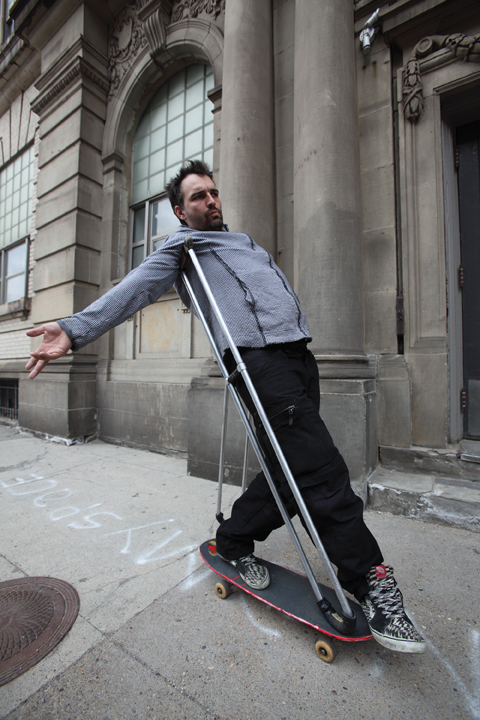
bill shannon
Public Works
Bill Shannon é dançarino, coreógrafo e artista interdisciplinar com um estilo muito próprio, sendo conhecido no mundo da dança como The CrutchMaster (O Mestre das Muletas) pois é o criador de uma técnica única de dança com muletas, a Técnica Shannon, desenvolvida a partir da sua vasta experiência no manuseio das mesmas. O artista realiza intervenções urbanas, vídeos e workshops fortemente influenciados pela cultura hip-hop, breakdance e grafite.
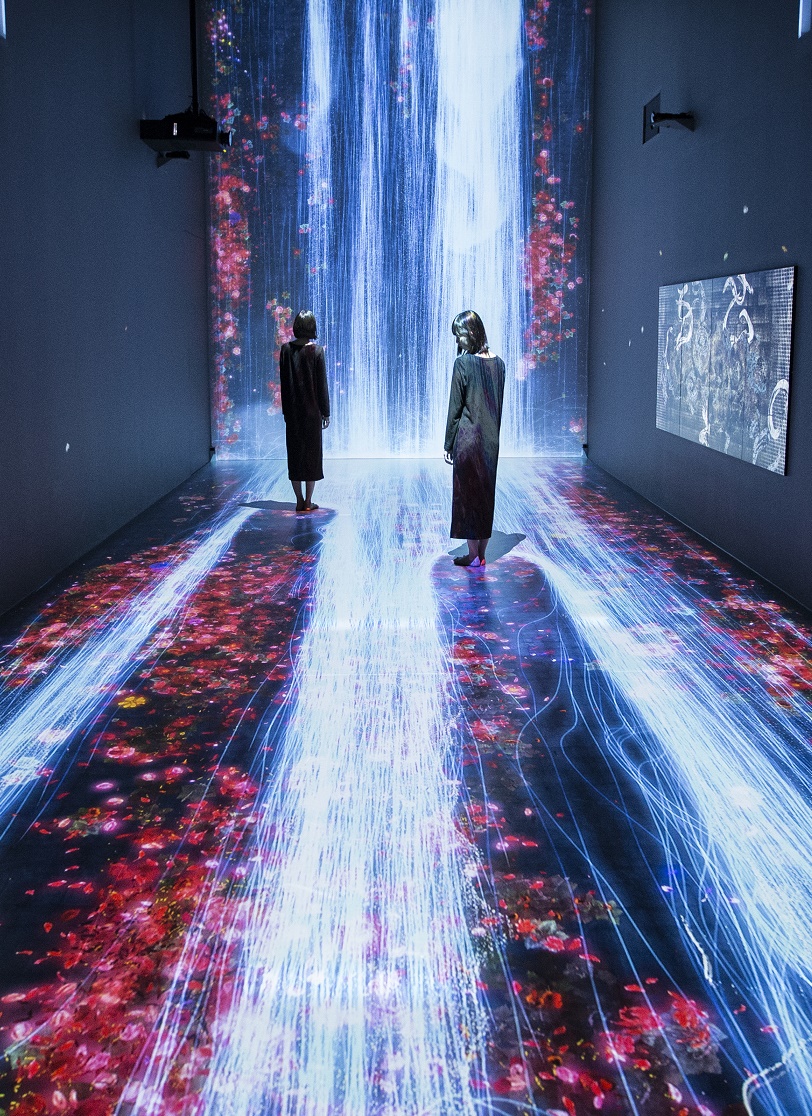
TeamLAb
Transcending Boundaries
Transcending Boundaries vise à explorer le rôle de la technologie numérique dans la transcendance des frontières physiques et conceptuelles qui existent entre différentes œuvres d’art, avec l’imagerie d’une œuvre se libérant du cadre et pénétrant dans l’espace d’une autre. Les installations dissolvent également les distinctions entre œuvre d’art et espace d’exposition et impliquent le spectateur par l’interactivité.

LOIE FULLER
Danse Serpentine
La Serpentine è un’evoluzione della gonna dance, una forma di danza burlesque arrivata da poco negli Stati Uniti dall’Inghilterra. La danza della gonna era di per sé una reazione contro le forme “accademiche” di balletto, incorporando versioni addomesticate di danze popolari e popolari come il can-can. La nuova danza è stata originata da Loïe Fuller, che ha fornito diversi resoconti di come l’ha sviluppata. Secondo il suo racconto, che è ampiamente riportato, non avendo mai ballato professionalmente prima, ha scoperto accidentalmente gli effetti della luce del palcoscenico proiettata da diverse angolazioni sul tessuto di garza di un costume che aveva frettolosamente assemblato per la sua performance nella commedia Quack MD, e spontaneamente ha sviluppato la nuova forma in risposta alla reazione entusiasta del pubblico nel vedere il modo in cui la sua gonna appariva alle luci. Durante il ballo ha tenuto la sua lunga gonna tra le mani e l’ha agitata, rivelando la sua forma all’interno. Nelle parole dello storico della danza Jack Anderson, “Il costume per la sua Serpentine Dance consisteva in centinaia di metri di seta cinese che lei lasciava fluttuare intorno a lei mentre gli effetti di luce suggerivano che stesse prendendo fuoco e assumendo forme che ricordavano fiori, nuvole, uccelli ., e farfalle. “

ELECTRONICOS FANTASTICOS!
Barcodress/Barcodance
ELECTRONICOS FANTASTICOS! Il progetto ha reincarnato vari dispositivi elettronici di consumo in pensione come strumenti musicali come Electric Fan Harp, CRT-TV Drums, Air Conditioner Harp ecc. La band li suona catturando le onde elettromagnetiche. Il progetto Barcodress mira a creare il nuovo tipo di performance di danza. Gli abiti che hanno registrato suoni come motivi a strisce, i ballerini e gli artisti che scansionano gli abiti, insieme creano onde sonore elettriche in tempo reale. Espandendo i principi della registrazione e riproduzione del suono al corpo, esploriamo nuove possibilità per l’espressione della musica e della danza.

